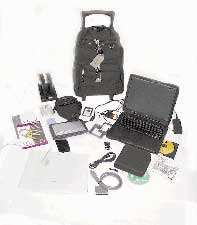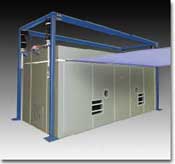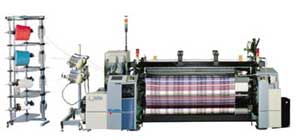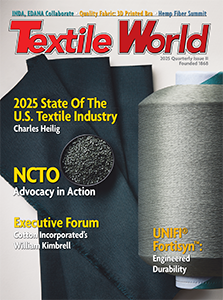MobileDesigner.com
Designers can take advantage of portable equipment and accessories to take the design process
on the road.Back in the industrial age, designers had a fairly mobile profession. A set of
color pencils, some blank paper and possibly a pair of scissors were about the only design tools
they needed while on the road. With the technology revolution came $50,000 to $100,000 CAD
work-stations and expanded job functions that pretty much tethered the designers to their shared
office computers for much of the 1990s.The good news is that not only have software and hardware
prices fallen, but so has the size of the equipment. In addition, monolithic
everything-for-everybody industry-specific software applications have given way to individual
plug-and-play modules designed to integrate with all aspects of not just design, but also the
surrounding supply-chain processes. These tools make it possible for todays global traveling
designer armed with a laptop, accessories, access to the Internet and a good battery to work on the
road, in the air and even at the beach.Defining Needs And AbilitiesStep one in creating a mobile
design studio is to define the processes that need to be supported. With the technology age having
re-engineered the design process to include everything from design to production to merchandising
and marketing, the well-equipped laptop will contain a broad range of applications to support
business correspondence, desktop publishing, textile design, product design, visual merchandising,
scheduling and more.The questions to be answered here include: how do you work; how much do you
travel; what kind of work do you do; will the design applications used run on a laptop and, if so,
what are the system requirementsAnother very important consideration is your comfort level with
system administration. The mobile designer loses the benefit of the companys IT administrator or
local guru while on the road. Its one thing to know how to use applications, but quite a different
set of skills is necessary to be able to recover crashed systems, re-install files from a backup,
detect and destroy a virus, connect a broad range of peripherals, and configure Internet access
using international dialing codes and foreign telephone wiring.The Mobile Designers Tools

Outfitting the mobile design office can be as simple or as complex as the job description,
travel requirements, skills and budget will allow. At the very minimum, mobile designers will want
the fastest laptop they can afford, either Macintosh or PC, that is also as lightweight as
possible. It should include as much RAM as possible, at least 8 gigabytes of hard drive space, a
24x CD-ROM player (or faster), an internal modem of at least 56K, and at least one spare battery.Be
sure your tool kit includes a telephone extension cord that will allow you to plug your computer
into the wall jack or dataport on the telephone. An analog/digital line splitter will prevent
having to swap the computer and phone on the wall plug-in locations where there isnt a dataport on
the phone itself. Be sure to include surge protection for both electrical and phone lines. U.S.
travelers may want to check out the Curtis compact all-in-one device that includes surge protection
for both electrical and phone lines, as well as a built-in RJ-11 telephone extension cord.Also on
the list of essentials is a CD containing backup copies of the operating system install disk,
copies of all device drivers and software, all essential files and images, as well as copies of all
software programs. You should also carry information on emergency technical support contacts for
both Internet and telephone access on all hardware and software. Be sure to research Internet
dial-up numbers for each city you are visiting before you leave.International travelers will need
to include surge protection for overseas electricity as well as an electrical converter kit that
will convert their 110-volt appliances to the 220 to 240 volts found in many foreign countries.
Phone jack adapters will allow them to plug their RJ-11 phone plug into the broad range of unique
jacks found around the world.The software on your mobile office will be unique to your job
requirements and work habits. Chances are you will be working with a combination of both
off-the-shelf and industry-specific applications. Holly Henderson, United Design Resources, New
Rochelle, N.Y., and an instructor at The Fashion Institute of Technology (FIT), New York City,
advises prospective mobile designers to confirm their industry-specific software will run on a
laptop computer, as a few still do not. She also recommends they check to confirm the software will
support dual monitors, as many designers prefer to connect their small laptop monitors to larger
ones, often placing the application design tools on one monitor with the work product on
another.Must-have applications include virus software, Internet software and file-compression
software to compress designs into a manageable size that can be sent via the Internet. Industry
veterans recommend using the .zip format, which can be universally read on both Macintosh and PC
computers. Adobe Acrobat will allow conversion of your work product to the Adobe .pdf format, which
will allow files to be read by computers that dont have your specific software on them. The
recipient need only have Adobe Acrobat Reader software, which is available free from the Adobe
website (See Resources For Mobile Travel Information And Products at the end of this article).The
Wired DesignerFrom here, we launch into a world of hardware options that will truly allow you to
push the technology envelope. From digital tablets and storage devices to printers, scanners,
cameras, PDAs and cell phones, there are a wealth of portable options.A cell phone with a
cell-compatible modem and software will allow access to the Internet without the need for a
hard-wired phone line. Not all cell phone manufacturers support this feature, so check before
buying a phone if this option appeals to you.If you own an older computer that doesnt have a USB
port, you may want to look into a USB converter PC card, which slides right into the PC card slot
and will allow you to add many of the new USB Macintosh or PC peripherals on the market. The PC
card can also improve the likelihood of being able to connect to peripherals found at remote
locations.An internal or external Jaz or Zip media drive will not only expand file storage
capacity, but will allow you to receive and distribute files when they are too large to transmit
via the Internet or when associates dont have Internet access.Dont forget to carry a few extra
disks with you. With the cost of writeable CD drives diminishing as fast as the size of the units,
this could be an alternative solution to Jaz or Zip drives.While there are portable scanners on the
market, a digital camera may be more versatile and easier to carry. The newer breed of portable
digital cameras supports the ability to capture more than 3 megabytes of data in a single photo,
more than enough for the inspirations found in retail, trade show or fashion show jaunts. The
ability to photograph your inspirations and then download them directly into the computer without
processing film and scanning photos will allow you to pay for the cost of the camera fairly
quickly. Take a look at the new Canon PowerShot S20, reported to be the worlds smallest digital
camera.The designer who feels that drawing with the mouse is like drawing with a bar of soap should
check out the 6-by-8-inch Wacom tablet and pen.The well-equipped designer is not without SCSI
connectors for peripherals, video cables (for presentations) and Ethernet cabling. Oh, and dont
forget the AC power cable for your computer!While a hand-held device such as a Palm Pilot is too
small for use as a design tool, it supports many of the functions that a growing number of
designers now perform on the computer, including scheduling, e-mail communications and contact
information.There is also a broad range of software available for these devices to supply excellent
travel information including maps, hotels and restaurants. These hand-held devices, which are
synchronized with the information on the main computer, can be a wonderful tool for quick access to
information in places where booting up your laptop just isnt feasible.Now, heres the clincher.
Whatever you use must fit into a carry-on bag that conforms with airline size restrictions that
allow storage of the bag underneath the seat in front of you. You dont want to check it and risk
losing or breaking the components. You probably dont want to have to watch it as you roam around
the plane either. A strong cable and lock will allow you to secure it to your seat so that you can
visit the restroom with peace of mind.And last, but not least, dont forget to insure your mobile
office. The setup will cost between $4,000 and $10,000, and by virtue of its portability, it is
more susceptible to damage, theft and loss. Insure the cost of the equipment and software, and
leave a good backup of your data at home. Practicing safe computing will avoid the pain of possibly
losing years of hard work.
Editors Note: Teri Ross is a writer, speaker and consultant focusing on CAD/CAM technology and
process improvement strategies for the sewn products industries. She is owner and president of
Imagine That! Consulting Group, publishers of the award-winning techexchange.com. She can be
reached at tross@techexchange.com or at (952) 593-0776.
November 2000







